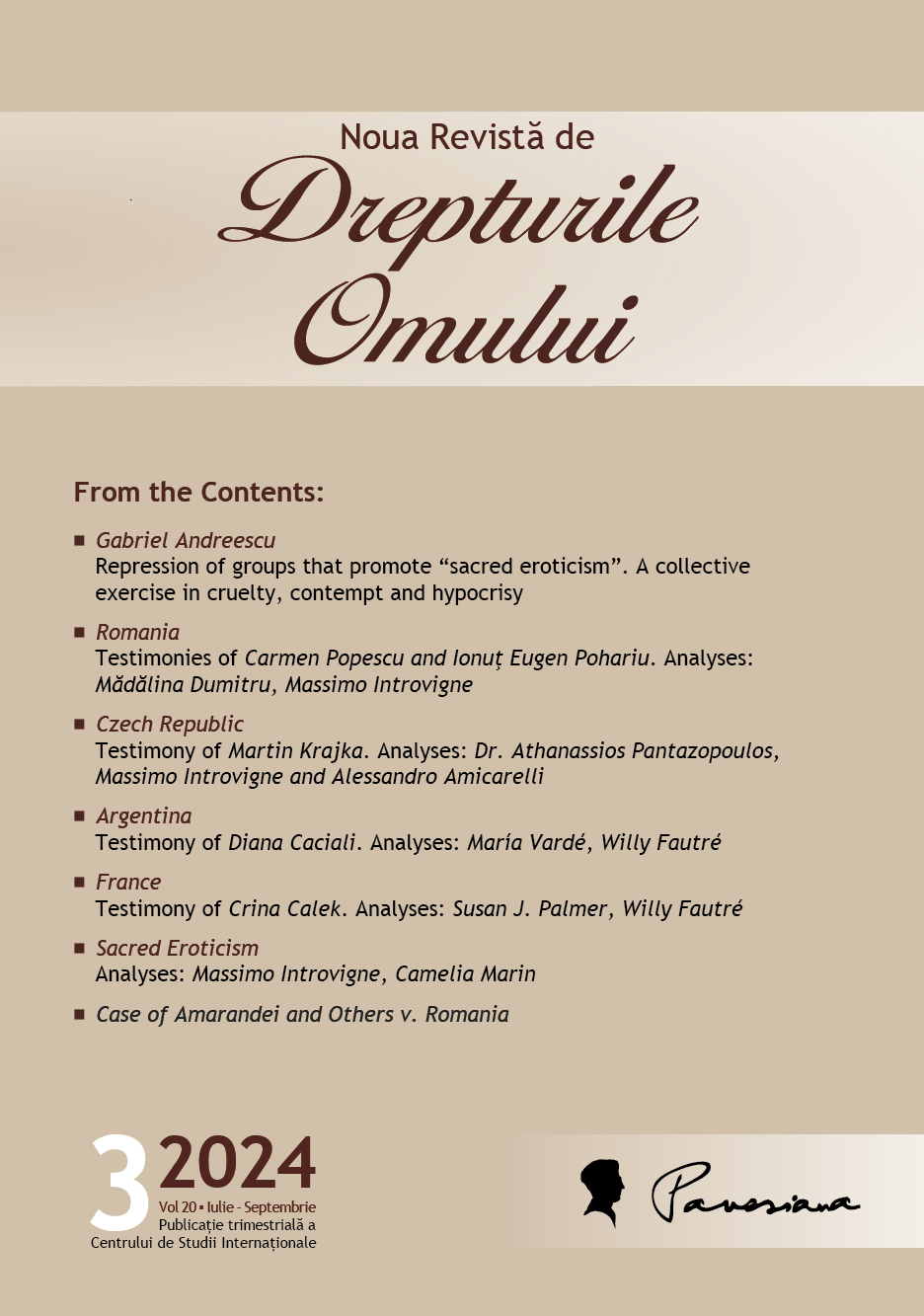Massimo Introvigne, Sacred Eroticism: Tantra and Eros in the Movement for Spiritual Integration into the Absolute (MISA). Camelia Marin: Book review
Massimo Introvigne, Sacred Eroticism: Tantra and Eros in the Movement for Spiritual Integration into the Absolute (MISA). Camelia Marin: Book review
Contributor(s): NRHR NRDO (Editor)Subject(s): Human Rights and Humanitarian Law, Court case
Published by: Centrul de Studii Internationale
Keywords: sacred eroticism; MISA; book review;
Summary/Abstract: Sacred Eroticism and Contemporary Esoteric Groups 1 MfSA is not the first, nor the only, contemporary esoteric movement that proposes to its followers teachings on sacred eroticism. In this chapter, I will first discuss the history of sacred eroticism in Western esotericism, and its non-Western roots. In the second part of the chapter, I wiII present the Guru Jára Path, a Czech movement that offers the closest parallel with MISA, although relevant differences will also emerge. An integral and fundamental part of esotericism is the theory of correspondences between macrocosm and microcosm: “as above, so below.” In his 1976 book Occultism, Witchcraft and Cultural Fashions, Romanian historian of religions Mircea Eliade (1907-1986) insisted that a recurring esoteric correspondence, found in almost all cultures, is that between spirit, light, and the male semen (Eliade 1976).
Journal: Noua Revistă de Drepturile Omului
- Issue Year: 20/2024
- Issue No: 3
- Page Range: 139-148
- Page Count: 10
- Language: English

